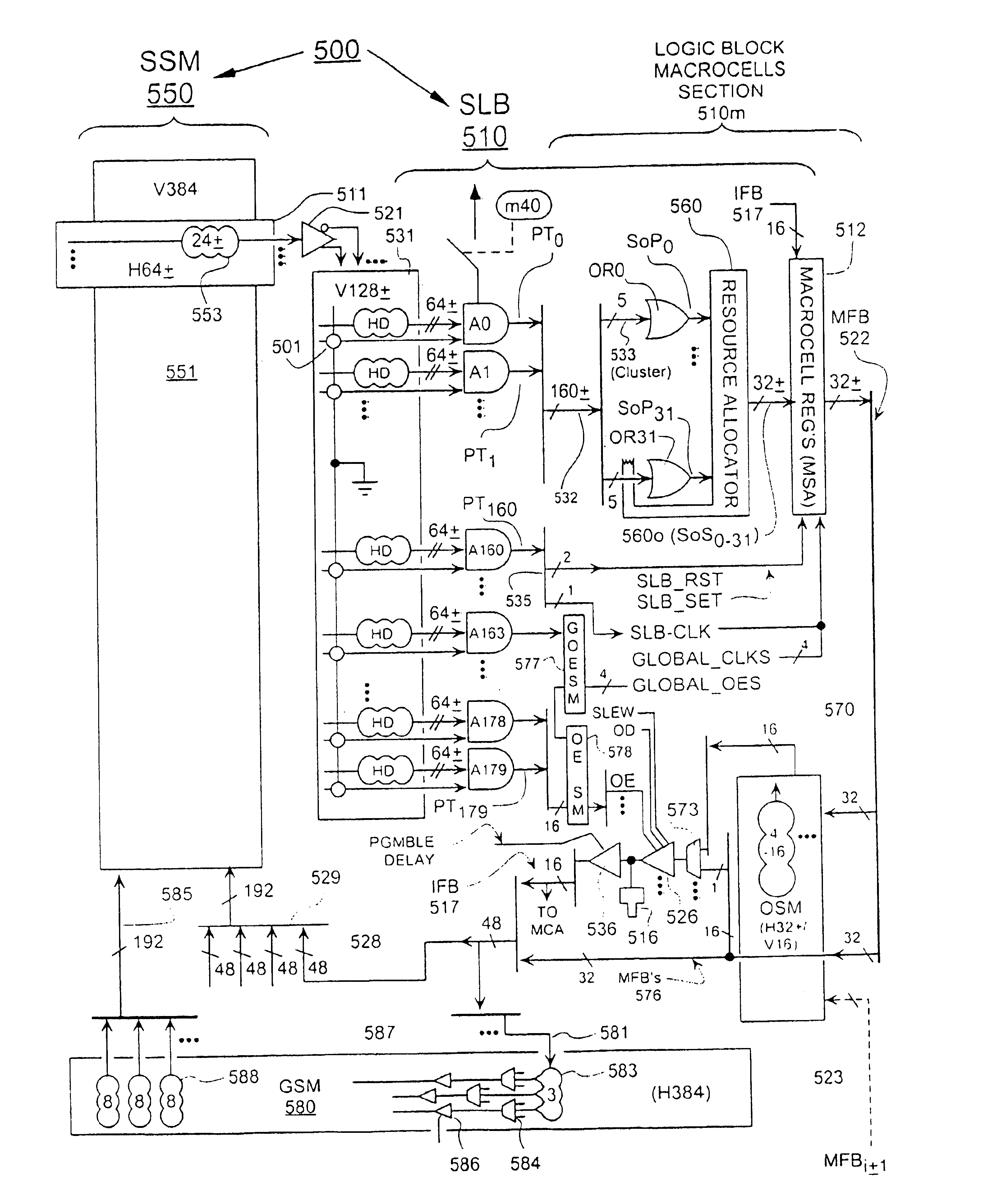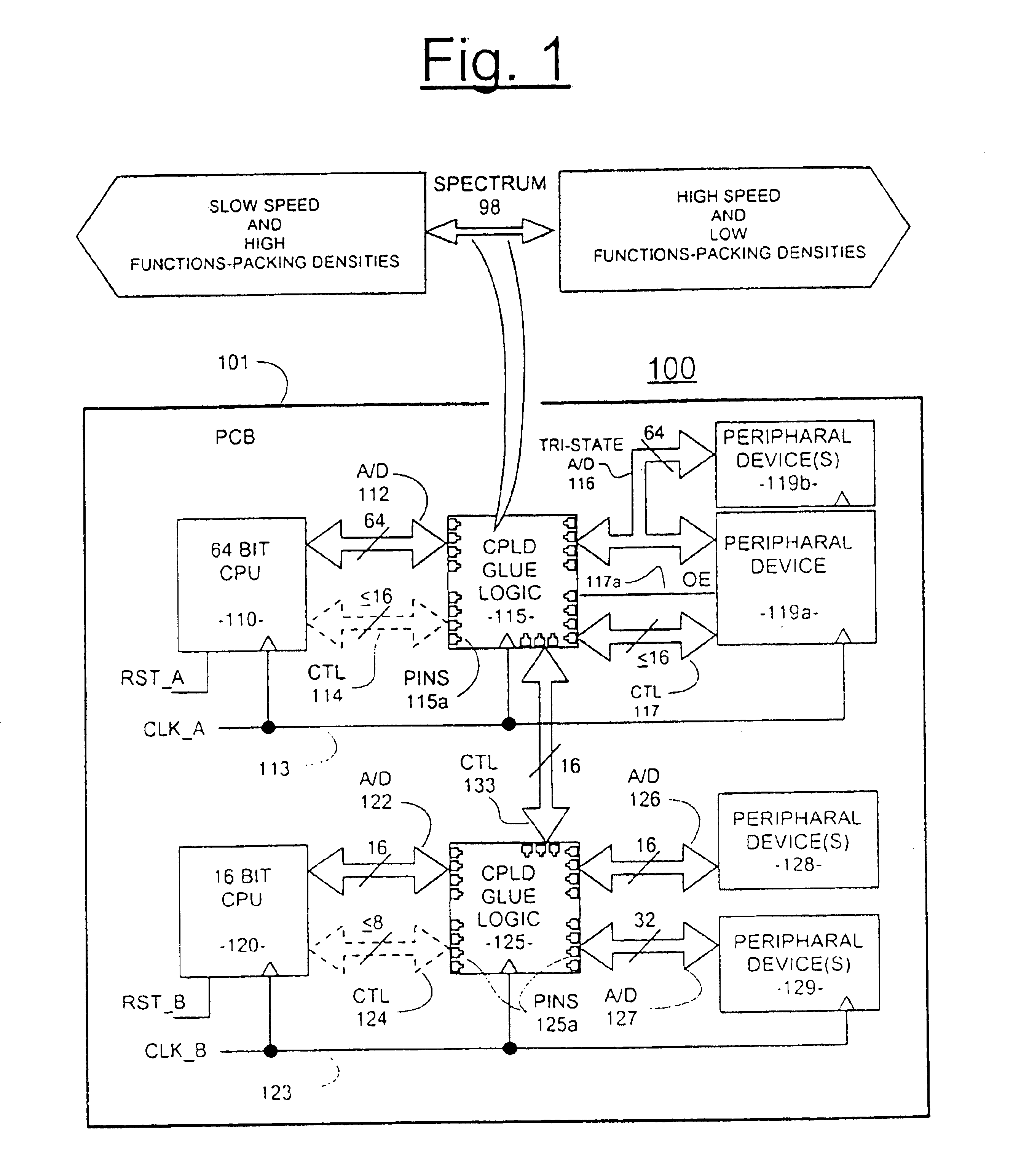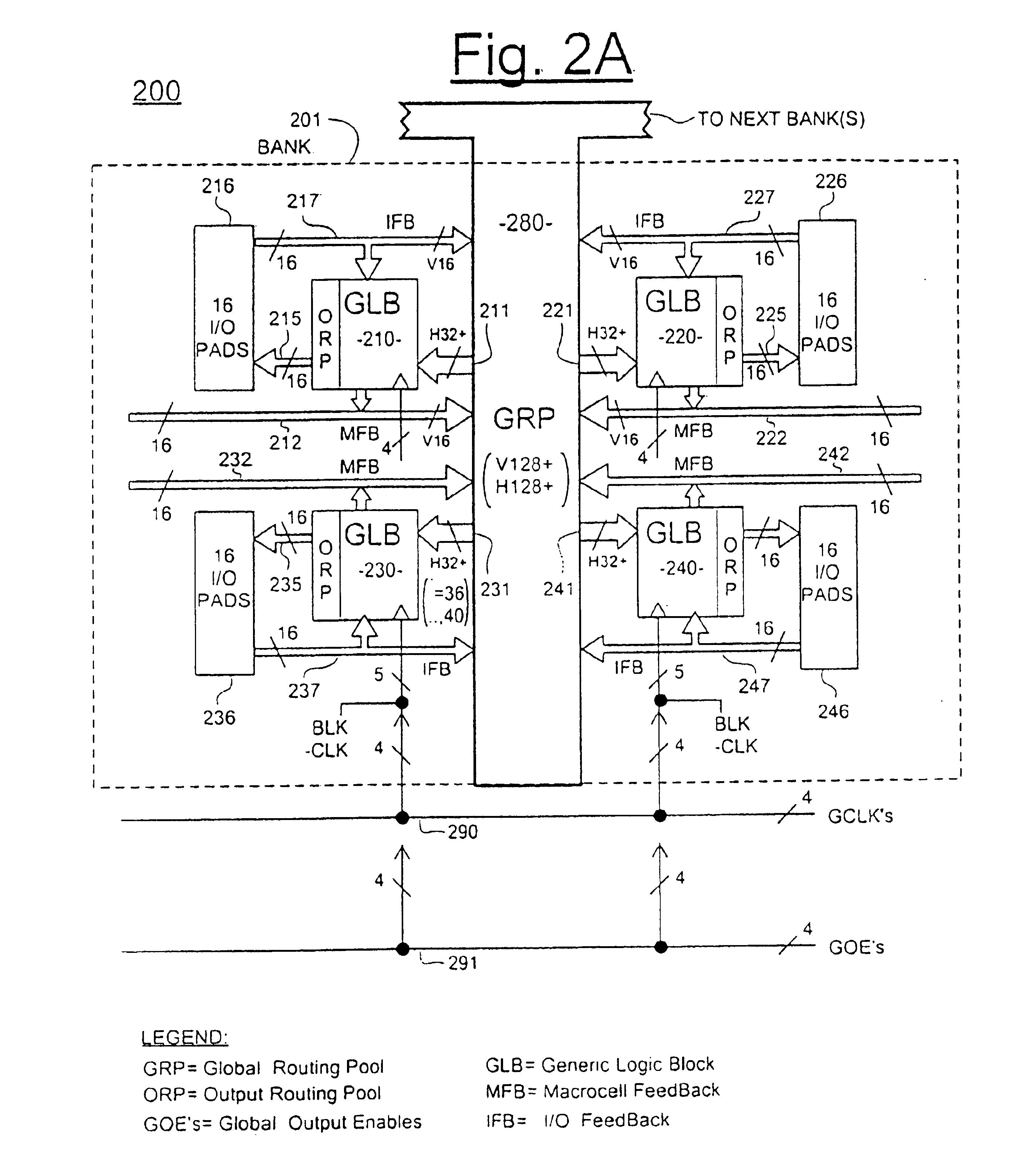Enhanced CPLD macrocell module having selectable bypass of steering-based resource allocation
a macrocell module and selectable bypass technology, applied in the field of monolithic integrated circuits, can solve problems such as failure to complete the mission on the first try
- Summary
- Abstract
- Description
- Claims
- Application Information
AI Technical Summary
Benefits of technology
Problems solved by technology
Method used
Image
Examples
second embodiment
Multiplexer 753 of the second embodiment optionally further receives the MFBJ signal as an input via line 722d. This option allows for re-registration of the MFBJ signal (see register output 722 of FIG. 7B) or optional exclusive-ORring of the MFBJ signal with a sum of SoP or SoS signals collected at inputs port 745i and thereafter provided as a sum on line 751a. Thus, the functionally-rich, sums-of-sums that is defined by output 745o of the SoS-producing gate of module J can be further enriched by selectively inverting or not inverting it as a function of the MFBJ signal output by storage / pass element 760.
The accompanying Table 2.1 shows one possible decoding option for configuration memory bits m16,13,28 of the second embodiment.
TABLE 2.1747-0747-1MUX outREG INm16m13m28(751a)(to J + 4)(751b)(751o)0000SoSJIFBIN = PAD0100SoSJLP′ IN = (PT0′)10000IFBIN = PAD110SoSJ0LP′IN = SoSJ(+)LP′0010SoSJSoPJIN = SoPJ0110SoSJMFBJ IN = MFBJ10100SoPJIN = SoPJ111SoSJ0MFBJIN = SoSJ(+)MFBJ
It may be appre...
embodiment 800
Referring to FIG. 8, a particular embodiment 800 for generating global output enable signals is shown. In the illustrated example, it is assumed that each bank (or segment) of the CPLD contains four logic blocks (LB's) and that the respective banks / segments are denoted as A through N. A contributions-collecting bus 801 extends through all the logic blocks for selectively collecting from the respective contribution signals (e.g., PT'82.A1 through PT′82.N4) of the respective logic blocks LB-A1 through LB-N4 in banks / segments A-N a subset of signals (GOE-candidates) for use as GOE signals (804′). Bus 801 is four lines wide in the illustrated example and thus collects a subset of four product term contributions from the fully-populated switch matrix (a PIP at each crosspoint) that links product terms gates A′82.1 through A″82.4 to contributions-collecting bus 801. Although a fully-populated switch matrix is shown on bus 801, it is also valid to use a partially-populated switch matrix in...
embodiment 302
The collected subset of 4 signals (801) may be coupled to a corresponding set of four polarity-selecting multiplexers 841-844. In one embodiment, two substitution multiplexers 821 and 822 are provided each for respectively substituting the signal of a respective I / O pin or global OE pin into the polarity-reversible mix in place of a corresponding one of two of the collected PT contribution signals. (The alternate embodiment 302 in FIG. 3B provides for full substitution of external signals (global OE pins) for internally-generated and contributed PT's 801.) An advantage of using a fewer number (e.g., 2) of I / O or global OE pins than the number (e.g., 4 on bus 804′) of global OE signals that are globally distributed in the CPLD is that pinout pin count is reduced. At least some of the global OE signals are internally derived (e.g., the outputs of multiplexers 843 and 844). As seen in FIG. 8, a first global configuration memory cell G03 controls the selection of substitution multiplexe...
PUM
 Login to View More
Login to View More Abstract
Description
Claims
Application Information
 Login to View More
Login to View More - R&D
- Intellectual Property
- Life Sciences
- Materials
- Tech Scout
- Unparalleled Data Quality
- Higher Quality Content
- 60% Fewer Hallucinations
Browse by: Latest US Patents, China's latest patents, Technical Efficacy Thesaurus, Application Domain, Technology Topic, Popular Technical Reports.
© 2025 PatSnap. All rights reserved.Legal|Privacy policy|Modern Slavery Act Transparency Statement|Sitemap|About US| Contact US: help@patsnap.com



